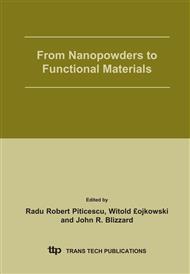p.57
p.63
p.75
p.79
p.83
p.87
p.93
p.103
p.109
Nanostructure, Nanochemistry and Grain Boundary Conductivity of Yttria-Doped Zirconia
Abstract:
This work was directed at a comprehensive study of the role of the nanostructure and nanochemistry on the transport properties of yttria-stabilized zirconia. Alumina additions lead to a decrease of sgb when the samples have clean grain boundaries, while sgb goes through a maximum in samples having glassy grain boundaries. The differences were attributed to the strong interaction between Al2O3 and SiO2 impurities leading to a glassy phase depletion at the grain-boundaries, due to a change in wettability. Moreover, XPS analyses show that Si and Y segregate near these interfaces according to a kinetic demixing process, explaining why a faster cooling rate after sintering has a beneficial effect on sgb.
Info:
Periodical:
Pages:
83-86
Citation:
Online since:
September 2005
Price:
Сopyright:
© 2005 Trans Tech Publications Ltd. All Rights Reserved
Share:
Citation:


